Thinking About Black Cherry Hair? Here’s What a Pro Wants You to Know
So, you’ve got your heart set on black cherry hair. I get it. It’s one of those colors that just hits different—it’s dark and mysterious in the shadows but then catches the light with this incredible, deep red-violet glow. It’s a total statement. But as someone who’s worked with this color family for a long, long time, I can tell you it’s more of a relationship than a one-time fling.
In this article
Honestly, black cherry isn’t just one shade you can point to on a chart. It’s a whole vibe. Think of a spectrum of deep, dark reds that have a cool, purplish undertone. Some lean more berry, others are closer to a rich cabernet. What they all share is a dark foundation (what we pros call a Level 3 to 5) and that signature blend of red and violet. Nailing this look isn’t just about slapping on some color; it’s about understanding your hair’s starting point and, let’s be real, your willingness to commit to the upkeep.
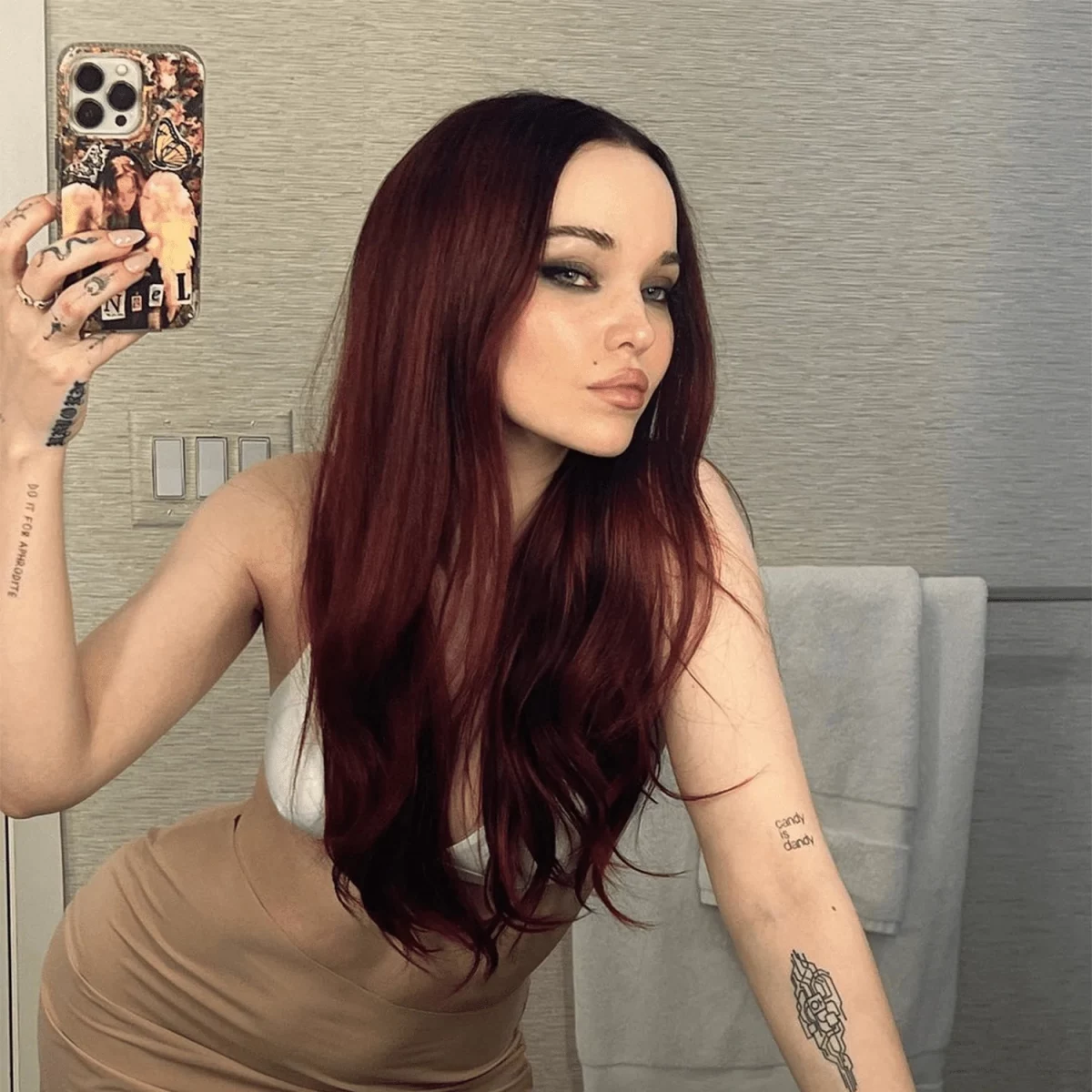
The Salon Experience vs. a Box Dye: A Reality Check
Before we go any further, we need to talk about the two main paths to get this color: heading to a salon or grabbing a box from the drugstore. And trust me, the results are worlds apart.
Going to a professional is an investment, no doubt. For a straightforward application on natural, uncolored hair, you might be looking at a price tag between $200 and $400, depending on your hair’s length and the salon’s pricing. If your hair has been previously colored, especially with dark box dye? That’s a color correction, my friend. It’s a delicate process that can take multiple appointments and cost anywhere from $300 to $800+. What you’re paying for is expertise. A pro knows how to lift your hair just enough without causing damage and how to customize the red-violet tones so they don’t turn muddy over your hair’s natural undertones. The result is a rich, dimensional color that’s designed specifically for you.
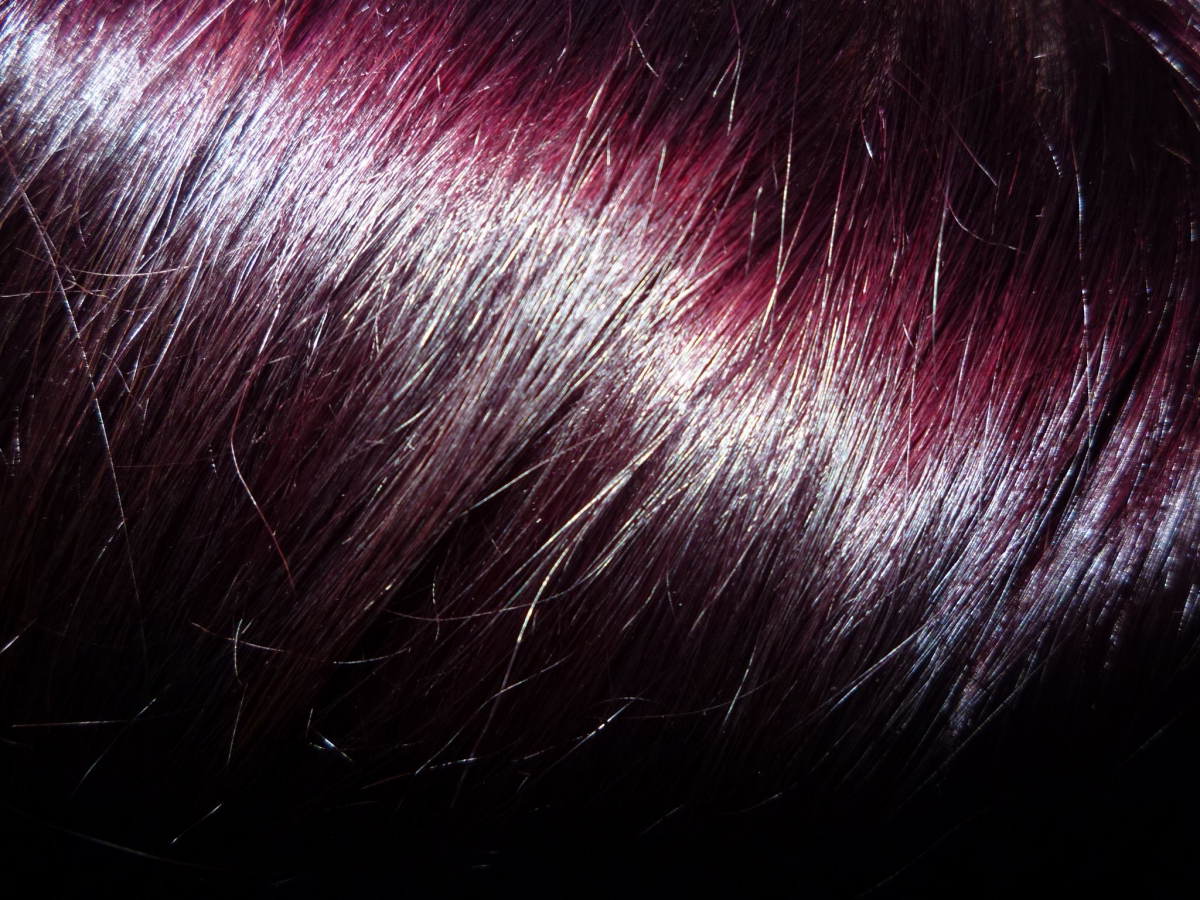
On the flip side, you have the $15 box dye. The appeal is obvious, but the risks are huge. That one-size-fits-all formula can’t account for your hair’s unique history or texture. The most common fails I see from box dyes are “hot roots” (where your scalp glows bright pinkish-red) or a flat, muddy brown that looks nothing like the picture. Fixing it often costs way more than getting it done right the first time.
Your First Appointment: The All-Important Consultation
The most critical part of the process happens before any color even touches your hair. It’s the consultation. When someone sits in my chair, the first thing I need to know is their hair’s entire life story. Old highlights from two years ago? A keratin treatment last fall? That black box dye you used once and forgot about? It all matters.
This is why a strand test is non-negotiable. I’ll take a tiny, hidden piece of hair and test my formula on it. This tells me everything: how your hair lifts, if there are old bands of color lurking, and exactly what the final shade will look like. It’s the ultimate safety net against a full-blown hair disaster.
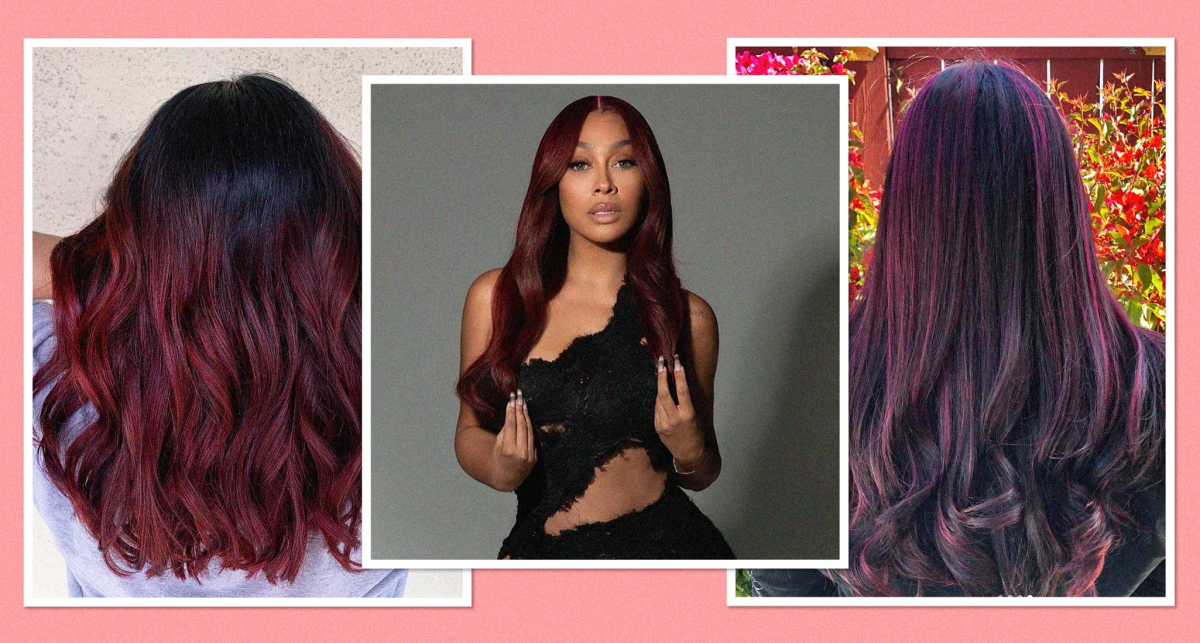
Heads up! You should be an active part of this conversation. Don’t be shy. Ask your stylist a few key questions:
- “Have you done this specific black cherry color on hair with my texture before?”
- “What’s your plan for my previously colored ends versus my natural roots?”
- “What will the upkeep schedule and cost look like for me, realistically?”
How We Customize the Perfect Black Cherry Shade
Once we understand the canvas, we can mix the paint. The approach varies completely based on your starting point.
For Natural, Uncolored Hair: This is the dream scenario. We can typically use a permanent color with a gentle developer that lifts your hair just enough for the rich red and violet pigments to pop. It’s a pretty straightforward process.
For Previously Colored Dark Hair: This is way more complex. You can’t just put a lighter color on top of a darker one and expect it to work. We first have to use a professional color remover to gently coax out the old, artificial color molecules. It can be a slow process and might take a couple of visits to get your hair ready for its new black cherry life.
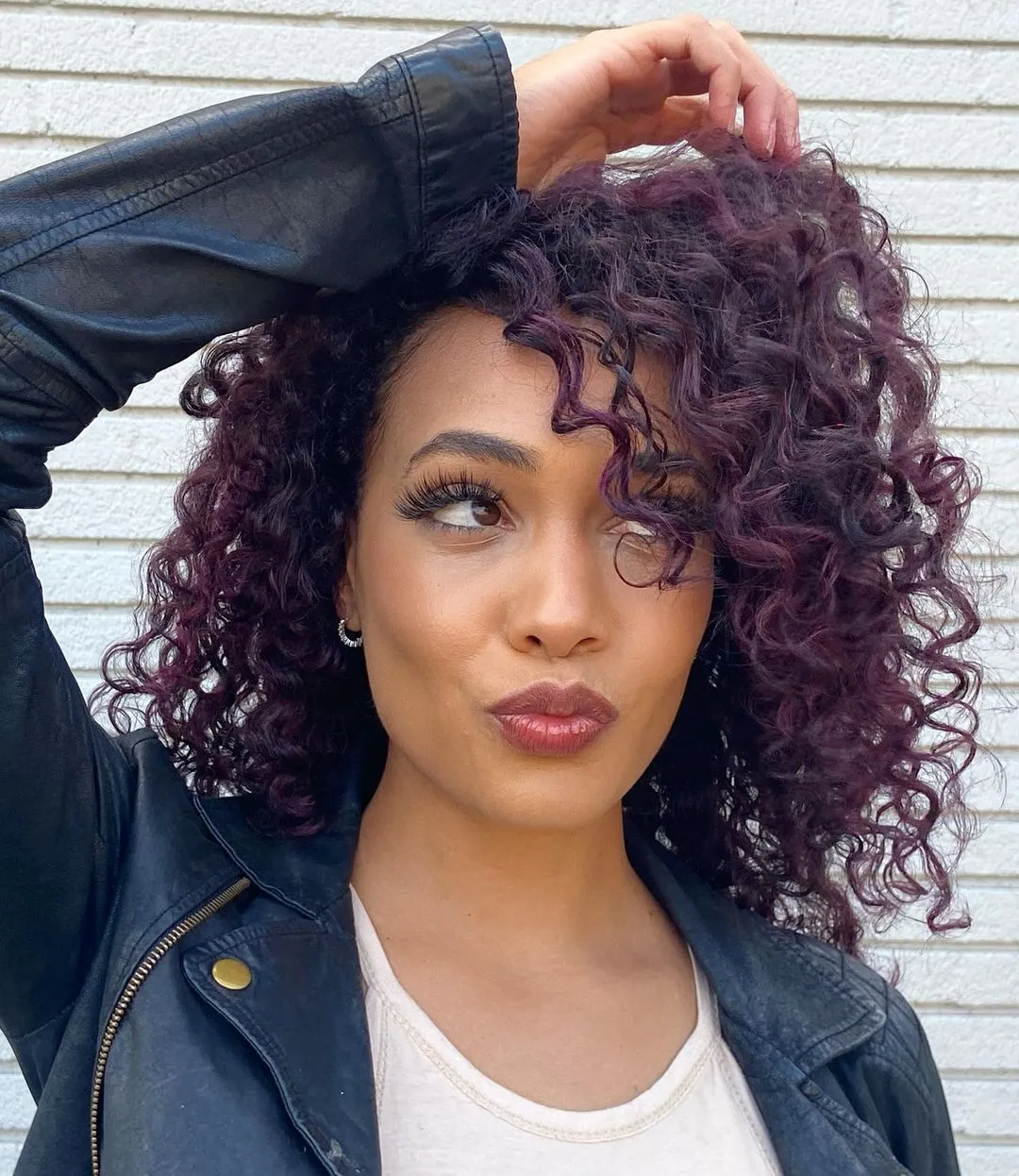
For Lightened or Highlighted Hair: Going from light to dark requires a crucial extra step: filling. Blonde hair is missing the underlying red and orange pigments that dark colors need for support. If we just put black cherry dye on blonde hair, it would turn a weird, hollow, muddy purple-gray. So, we first apply a red or copper-red “filler” color to build that foundation back in. Then, we can apply the final black cherry formula on top for a rich, true-to-tone result.
Keeping Your Color Alive (The High-Maintenance Part)
Getting the color is only half the battle. Keeping it vibrant is an ongoing commitment, and I’m always upfront with my clients about this. If you aren’t prepared to tweak your routine, this probably isn’t the color for you.
First, let’s manage expectations about the fade. When done correctly, black cherry should fade gracefully into a softer, beautiful merlot or a deep auburn. It shouldn’t turn into a swampy mess. Expect to be back in the salon every 6-8 weeks for a gloss to refresh the tone and a root touch-up. This maintenance visit will likely run you somewhere between $80 and $150.
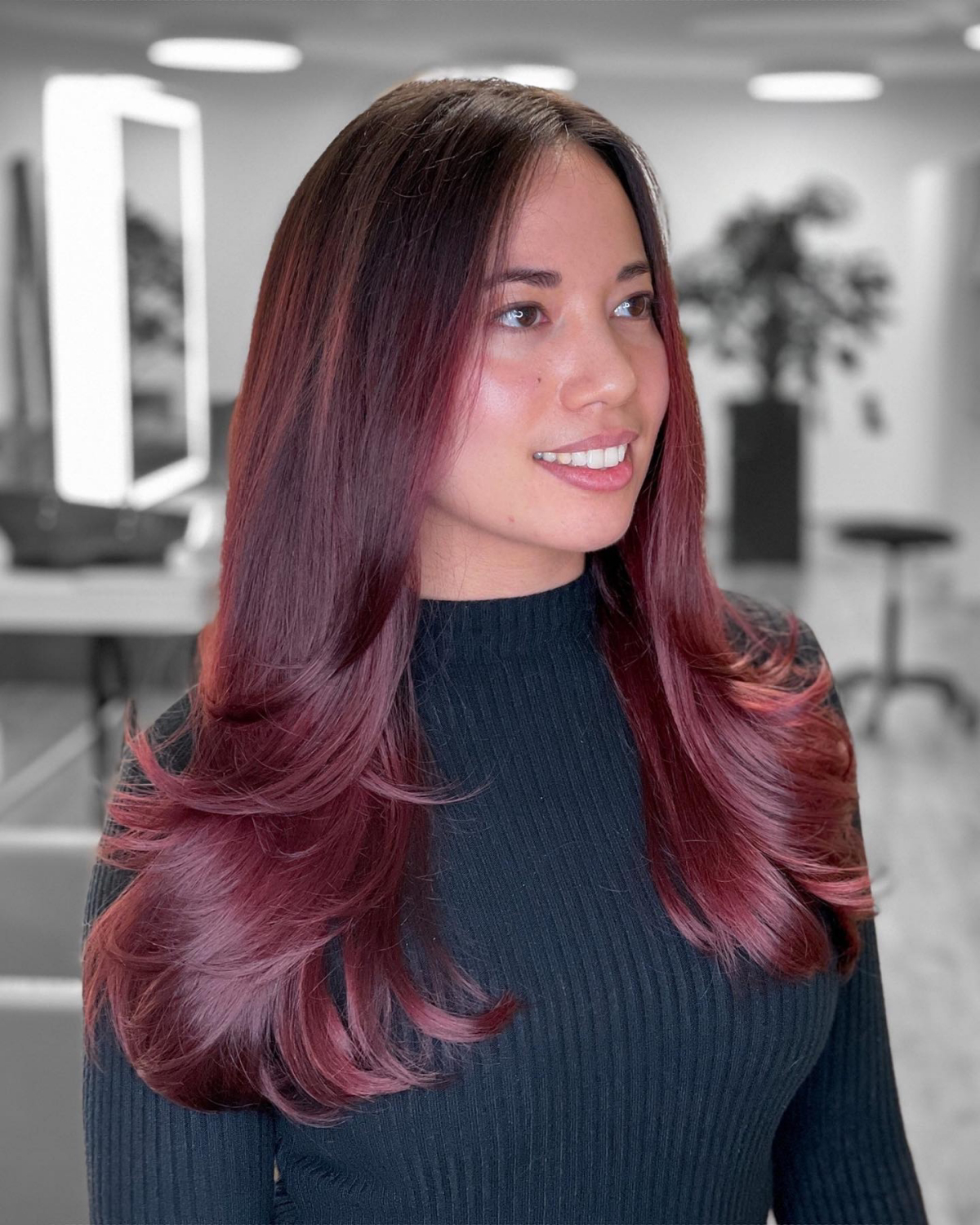
Now, for your at-home care. Here’s a quick shopping list to build your hair-care arsenal:
- A Sulfate-Free Shampoo: Essential for not stripping out your color. (Cost: $15 – $30)
- A Color-Depositing Conditioner: This is your secret weapon. I often recommend products like Keracolor Clenditioner in Merlot or Viral Colorditioner in Ruby. Use it once a week to fight the fade. (Cost: $20 – $40)
- A Dark Microfiber Towel: Red dyes bleed, especially for the first few washes. Save your nice white towels! (Cost: ~_15)
- A Good Heat Protectant: Heat is the enemy of red color. Don’t even think about using a flat iron without it. (Cost: ~$20)
Quick tip: After your appointment, try to wait a full 48-72 hours before your first wash. This gives the hair cuticle time to fully close down and lock in those color molecules. And when you do wash, use the coolest water you can stand.
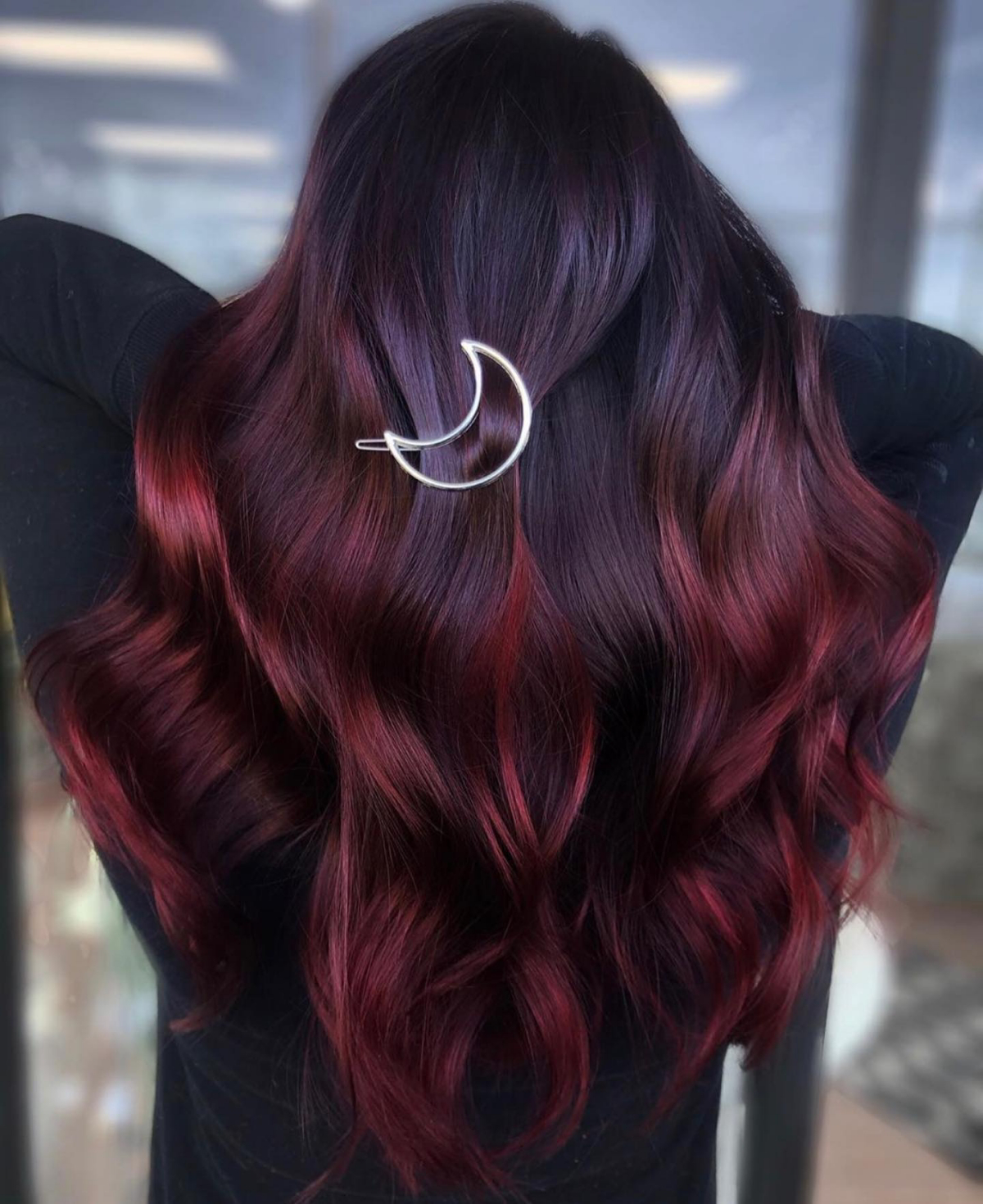
By the way, have you ever wondered why reds fade so fast? It’s pure science. The red color molecule is the largest of all the hair dyes. Because it’s so big, it can’t penetrate the hair shaft as deeply as other colors. This means it sits closer to the surface and, well, slips out more easily with every wash. So, it’s not your fault, it’s just physics!
A Final Word on Safety
Okay, one last serious note. Hair dye contains chemicals that can, in rare cases, cause allergic reactions. This is why a patch test is so important. A professional will apply a tiny dab of the color formula to your skin (usually behind your ear) 48 hours before your service to make sure you don’t have a reaction. If you’re coloring at home, you absolutely must do this yourself. Your safety is more important than any hair color.
Ultimately, black cherry hair is an absolutely stunning choice. It’s sophisticated, bold, and has a personality all its own. Just know that it’s a high-maintenance love affair that requires professional skill to create and dedicated care to maintain. But for those willing to commit, the payoff is a truly gorgeous, personalized color that’s worth every bit of the effort.
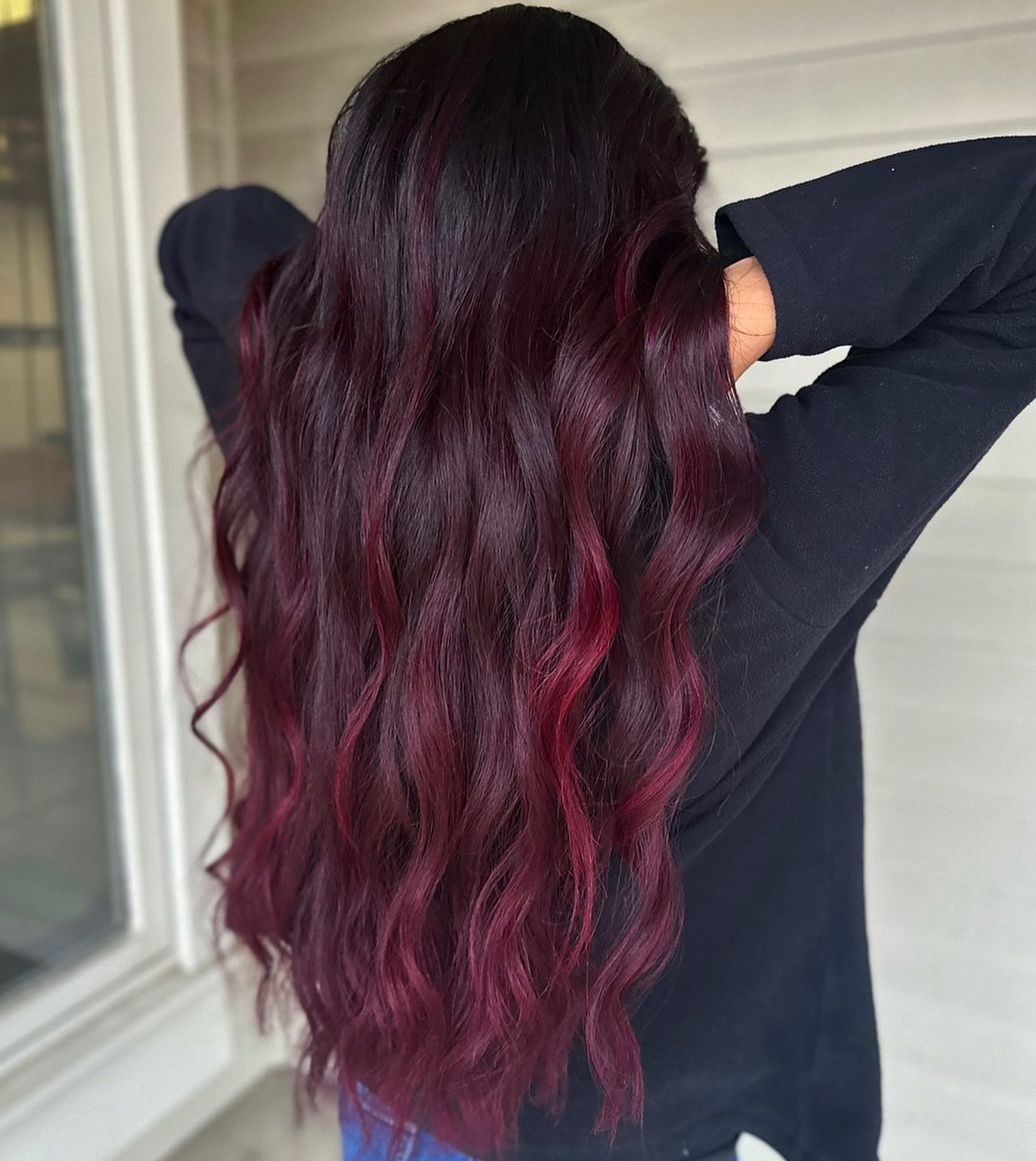
Galerie d’inspiration
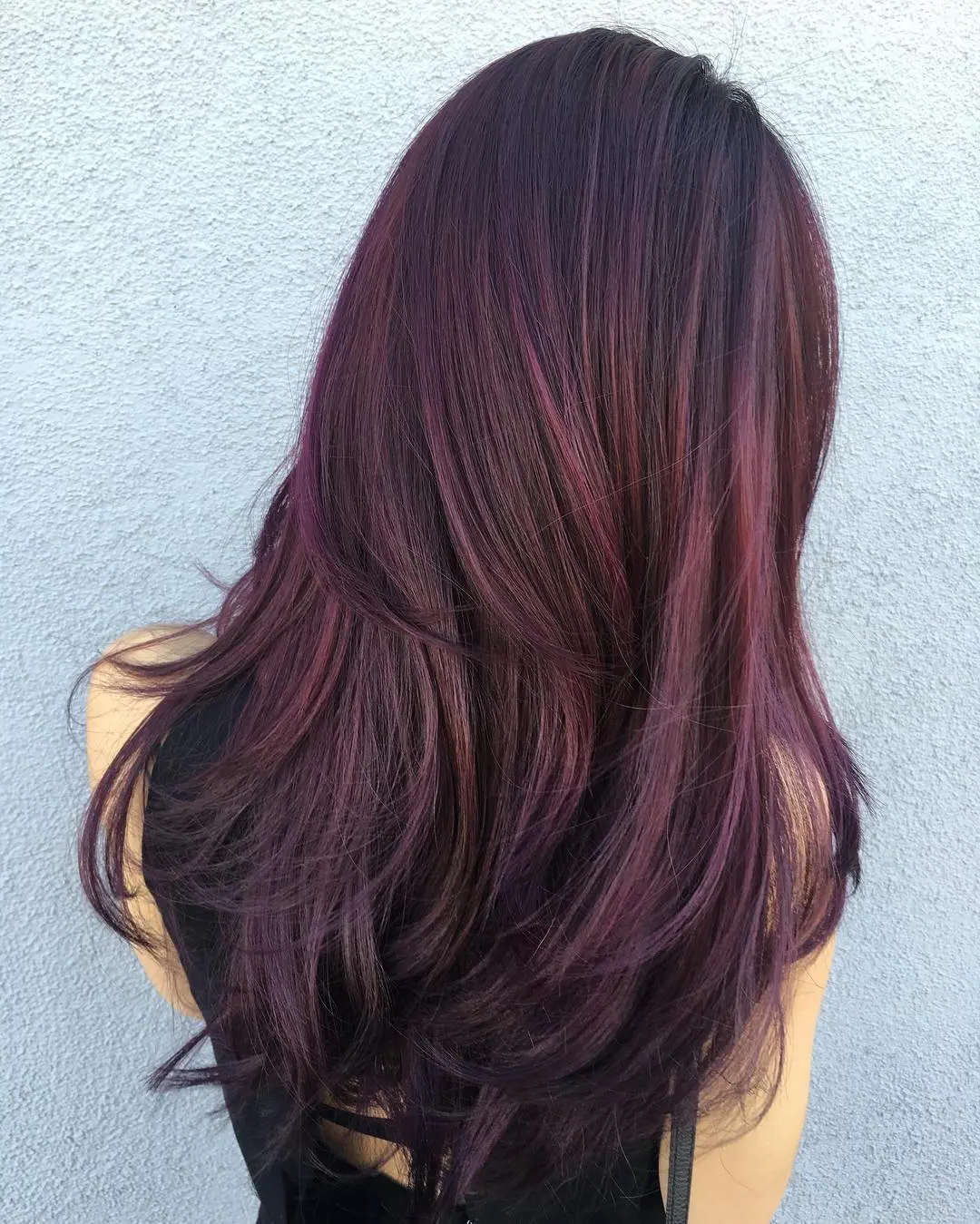
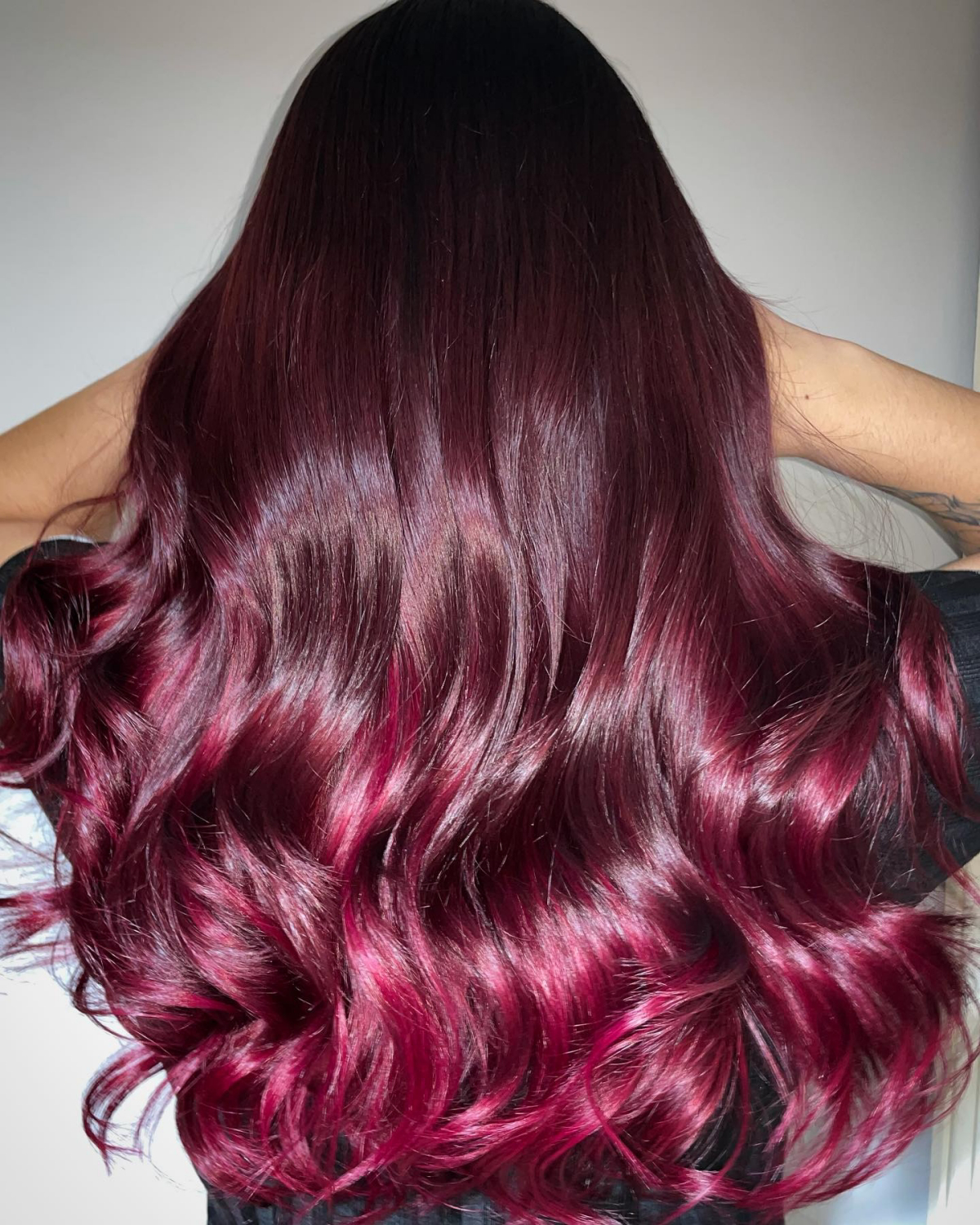
- Vibrant, multi-tonal shine under direct light.
- A deep, almost-black mystery in the shade.
- A boost of confidence with every hair flip.
The secret to this dynamic effect? It’s all about the layering. A skilled colorist won’t just apply one flat shade; they’ll weave in subtle variations of violet and crimson over a dark base, creating a color that truly comes alive and shifts with you throughout the day.
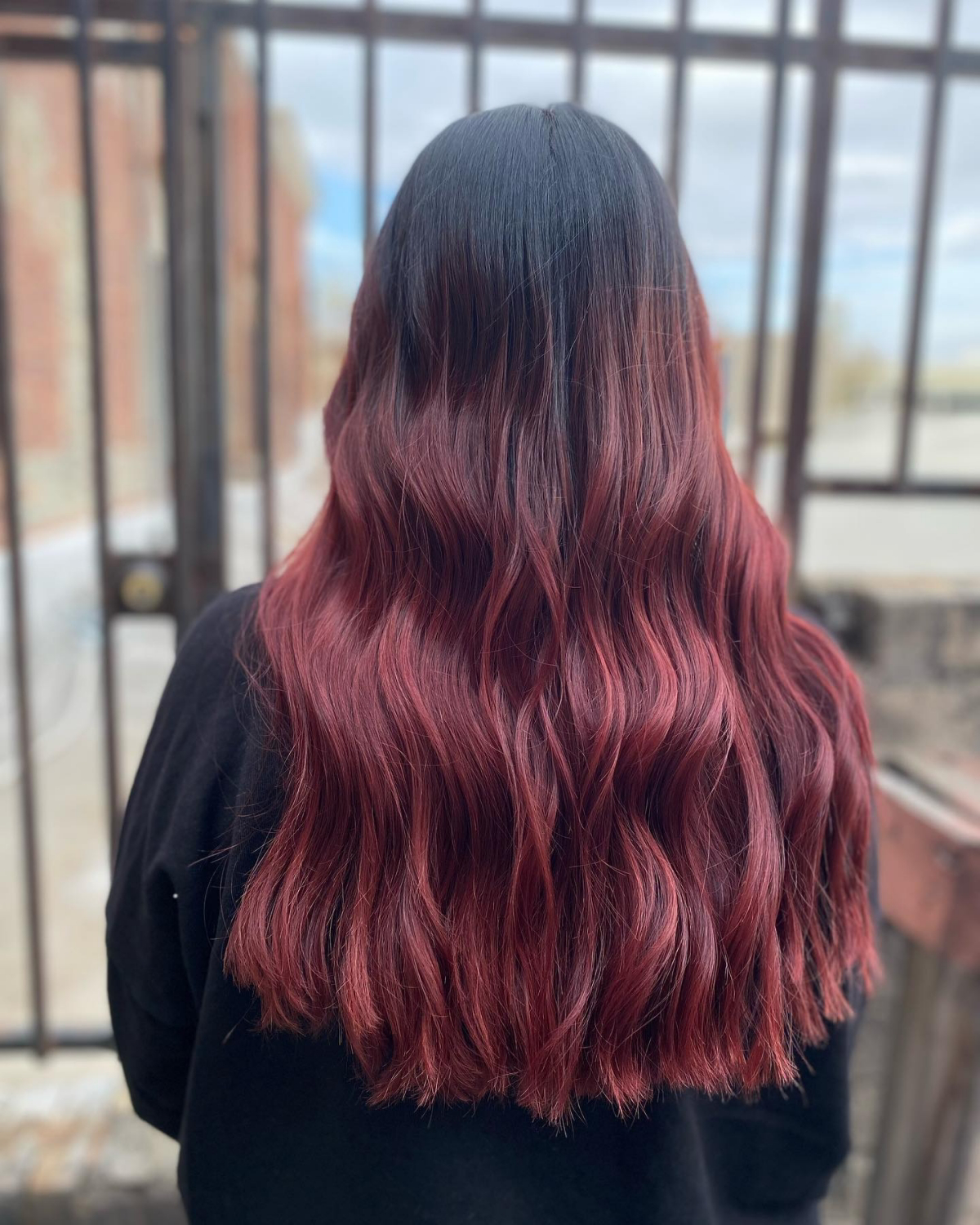
Your At-Home Arsenal: Investing in your salon color doesn’t stop when you walk out the door. To keep your black cherry from fading into a dull brown, a sulfate-free shampoo is non-negotiable. Look for formulas specifically for color-treated hair, like the Pureology Hydrate or Kérastase Chroma Absolu lines. They cleanse gently without stripping those precious, quick-to-fade red molecules.
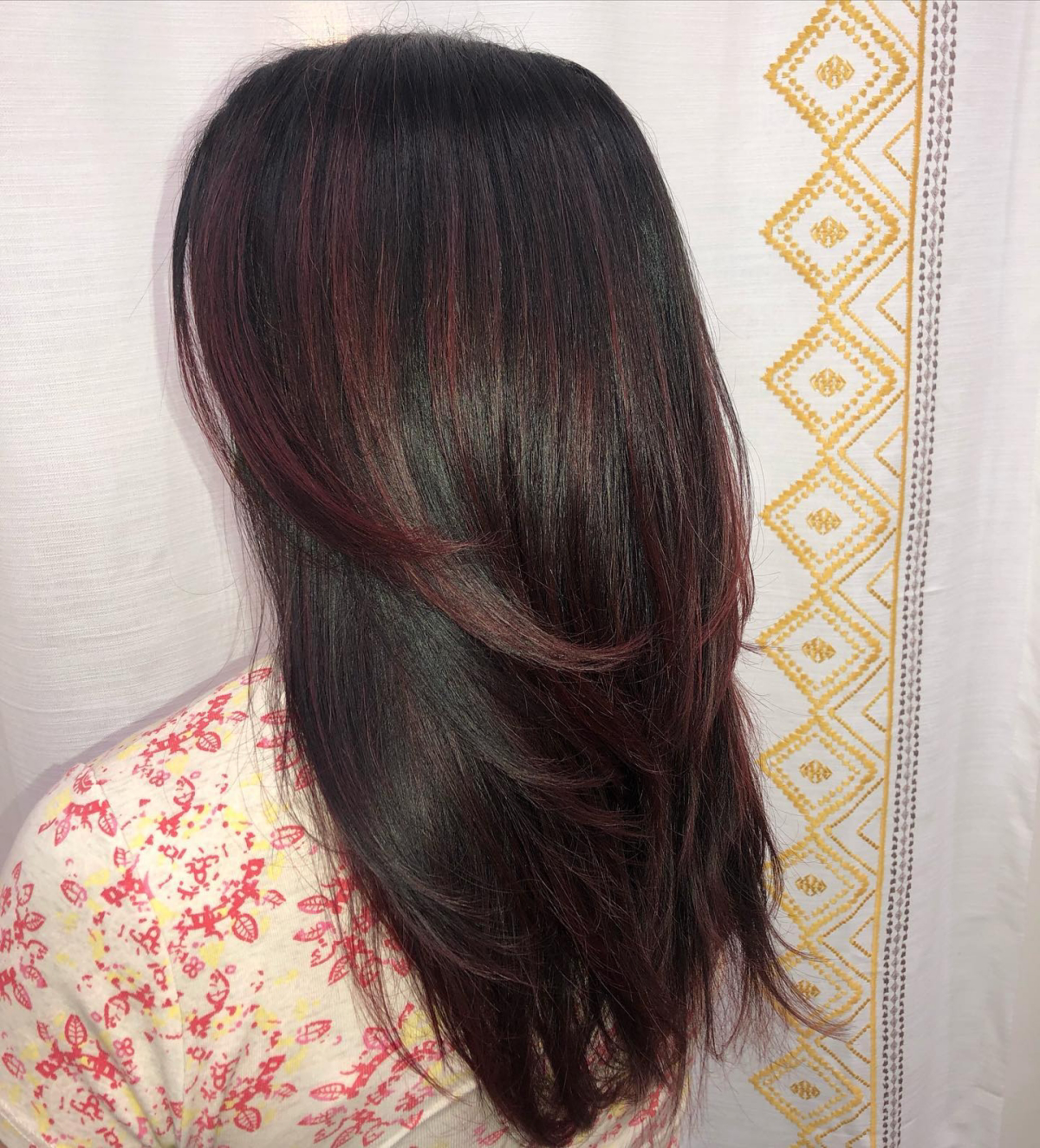
Will black cherry suit my skin tone?
Absolutely, it’s one of the most versatile bold colors! The key is customizing the undertone. If you have cool or neutral undertones (veins look blue or purple), lean into the ‘plum’ and ‘violet’ facets of black cherry. For warmer skin tones (veins appear greenish), ask your stylist to dial up the ‘cabernet’ or ‘burgundy’ red tones for a stunning, harmonious result.
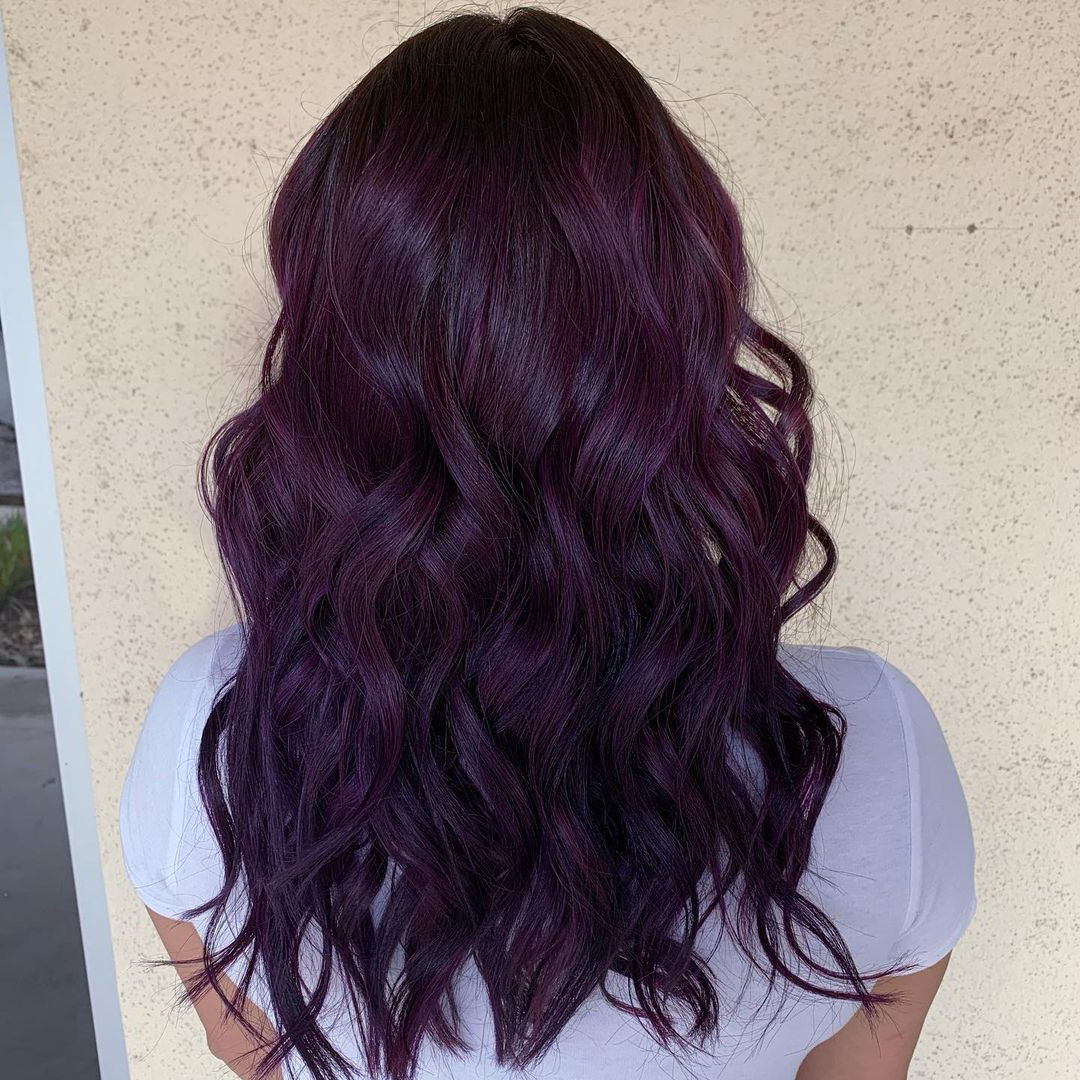
The red dye molecule is larger than other color molecules, which means it doesn’t penetrate the hair shaft as deeply.
This is the scientific reason why red and violet tones are notoriously fast-fading. They essentially sit on the surface of the hair, making them more vulnerable to washing, sun exposure, and heat styling. This is why a color-protecting routine and regular gloss treatments are so critical for maintaining that black cherry vibrancy.
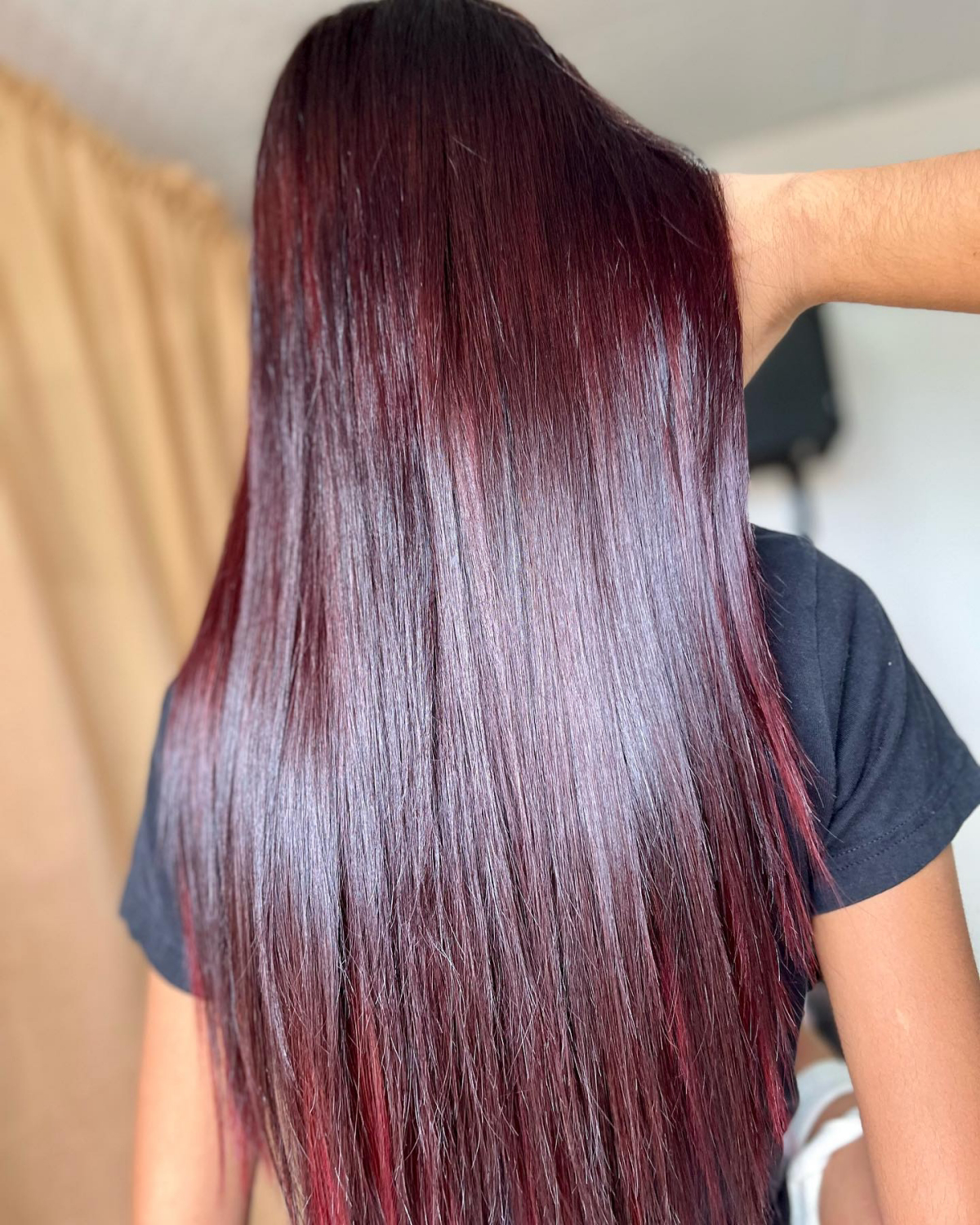
Before you take the full plunge, consider a test run. Many brands offer high-quality temporary color conditioners that can give you a feel for the tone against your skin. Try the Moroccanoil Color Depositing Mask in ‘Bordeaux’ or the Keracolor Color + Clenditioner in ‘Merlot’ on a small, hidden section of your hair to preview the vibe commitment-free.
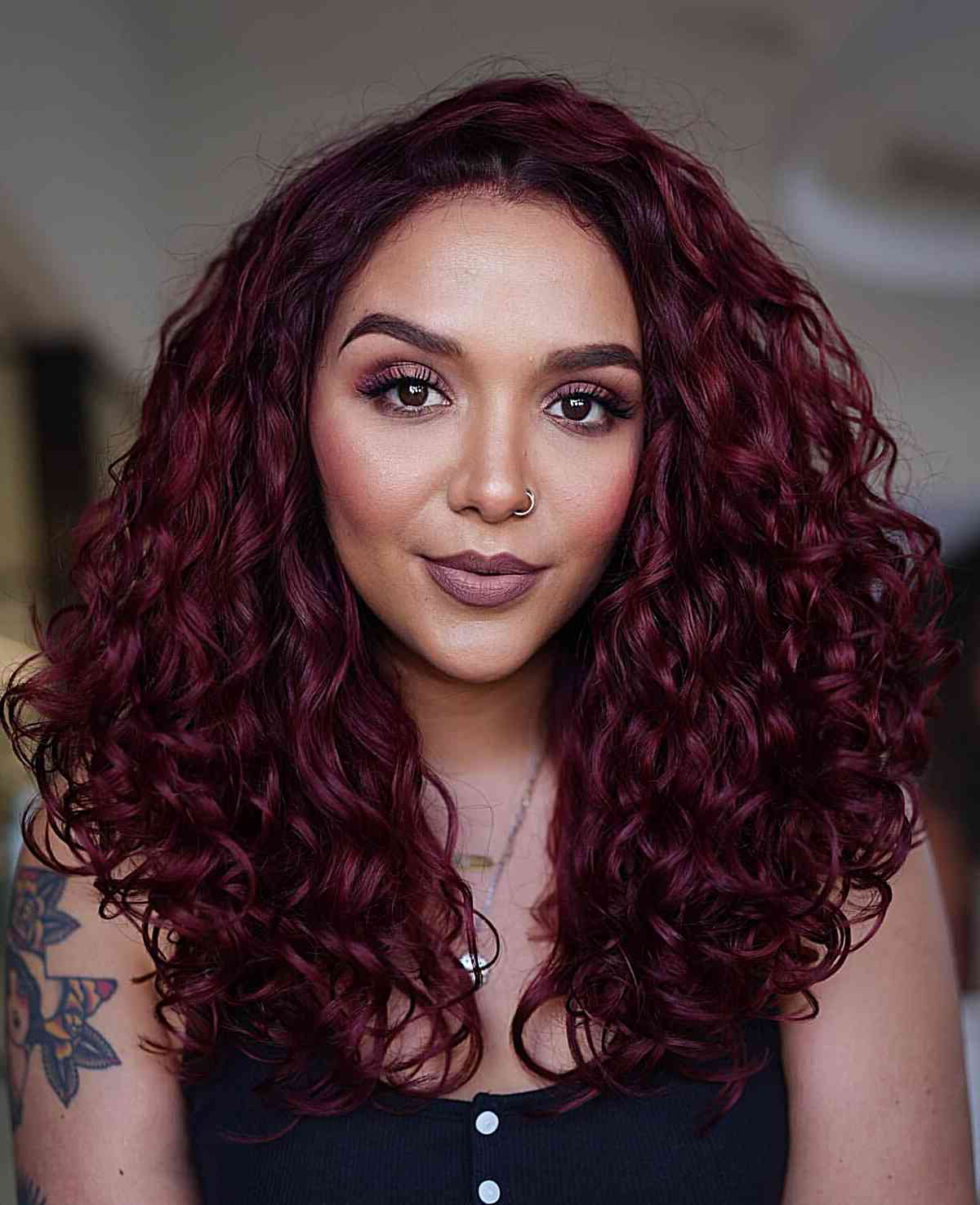
Full Color: A total transformation that saturates every strand for maximum impact. It’s a bold statement requiring consistent root touch-ups every 4-6 weeks.
Balayage or Highlights: Ribbons of black cherry are painted through your hair, often on a dark natural base. This offers a lower-maintenance, more sun-kissed effect with a much softer grow-out process.
For a first-timer, balayage can be a fantastic way to experience the color with less commitment.
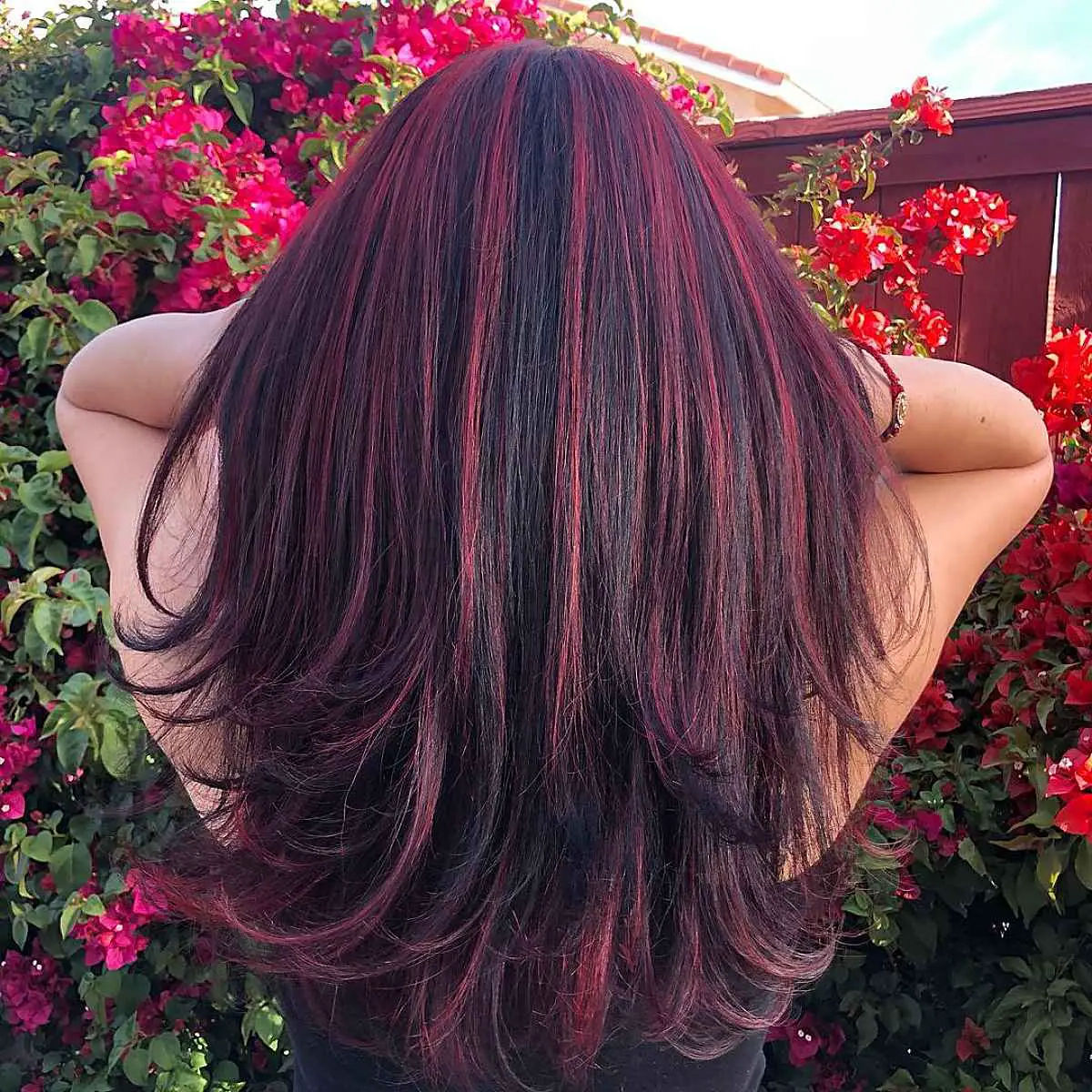
The number one enemy of a fresh black cherry color is hot water. It opens up the hair’s cuticle, allowing those vibrant red and violet pigments to slip right out and down the drain. To preserve your shade:
- Always rinse with lukewarm or cool water. A final cold blast helps seal the cuticle.
- Try to stretch the time between washes using a quality dry shampoo, like Living Proof’s Perfect hair Day™ Dry Shampoo.
- Consider a showerhead filter to remove color-stripping minerals like chlorine and iron from hard water.
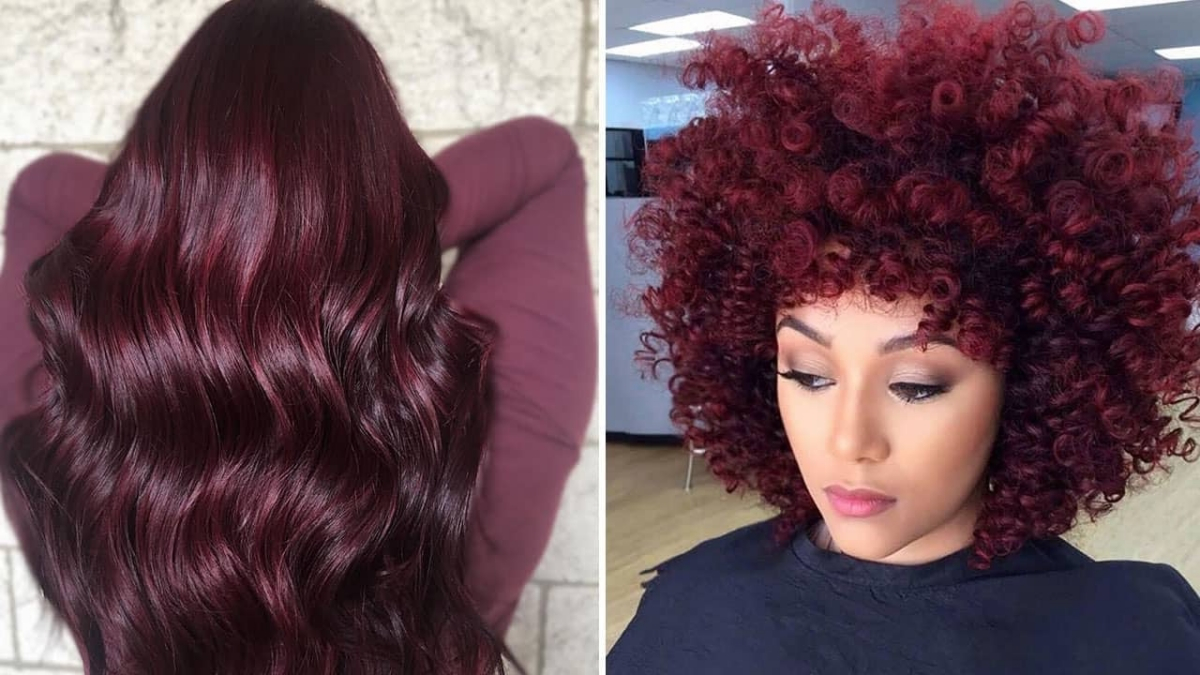
Rihanna’s iconic, fiery red era in the 2010s proved that deep cherry hues can be both high-fashion and incredibly wearable, cementing the color family as a bold classic.
A common pitfall is forgetting about heat protection. The high temperatures from flat irons and curling wands don’t just cause damage; they can literally scorch and fade your expensive new color, turning rich cherry tones dull and brassy. Always, always apply a heat protectant spray, like the ghd Bodyguard, before any heat styling to create a thermal shield and preserve the integrity of your shade.










